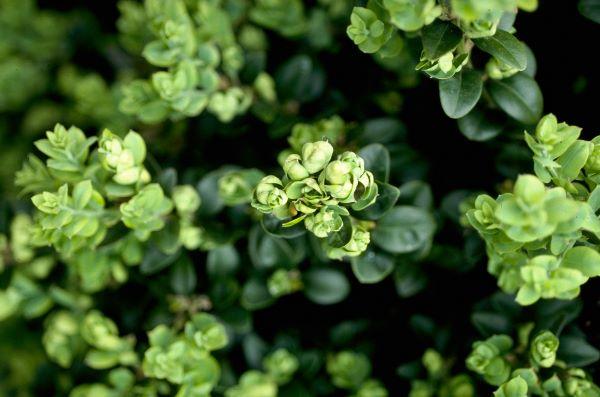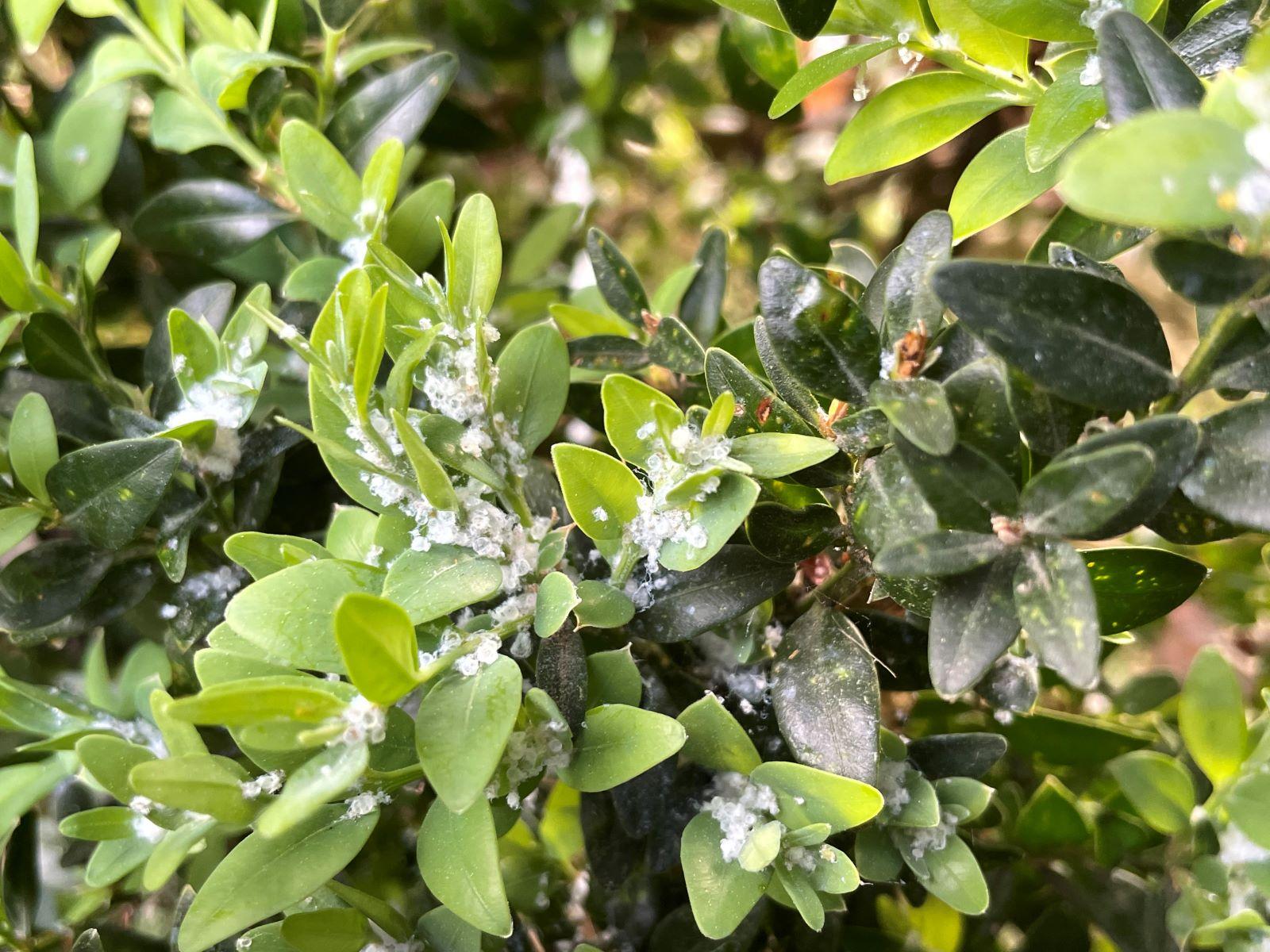Key points
- The boxwood psyllid, Psylla buxi, causes a characteristic cupping of the leaves on the terminal and lateral buds of boxwood.
- This insect can overwinter as an egg, or as a first instar nymph under the bud scales.
- As the buds develop in the spring, the eggs hatch and nymphs emerge to infest the leaves.
- The feeding causes the leaves to curl and form a cup which encloses the greenish colored nymphs.
- The nymphs produce a white, waxy secretion which may cover part of the body or small waxy pellets beside the nymphs.
- The greenish adults emerge late May into June, mate and lay eggs under the bud scales.



Management
- This pest mainly causes aesthetic damage to boxwoods (Buxus spp.). Infested branches can be left alone or pruned out by mid-May.
- For heavy infestations where aesthetics are a concern, chemical controls are an option. Horticultural oil or insecticidal soap can be applied in early May. Read and follow all chemical label instructions.
- In severe infestations a systemic insecticide can be applied in May into June. Systemic insecticides should be applied post-bloom according to label instructions to reduce the risk of impacting pollinator populations. Read and follow all chemical label instructions. Contact a professional pest control company for further guidance.
Rev. 5/2024
